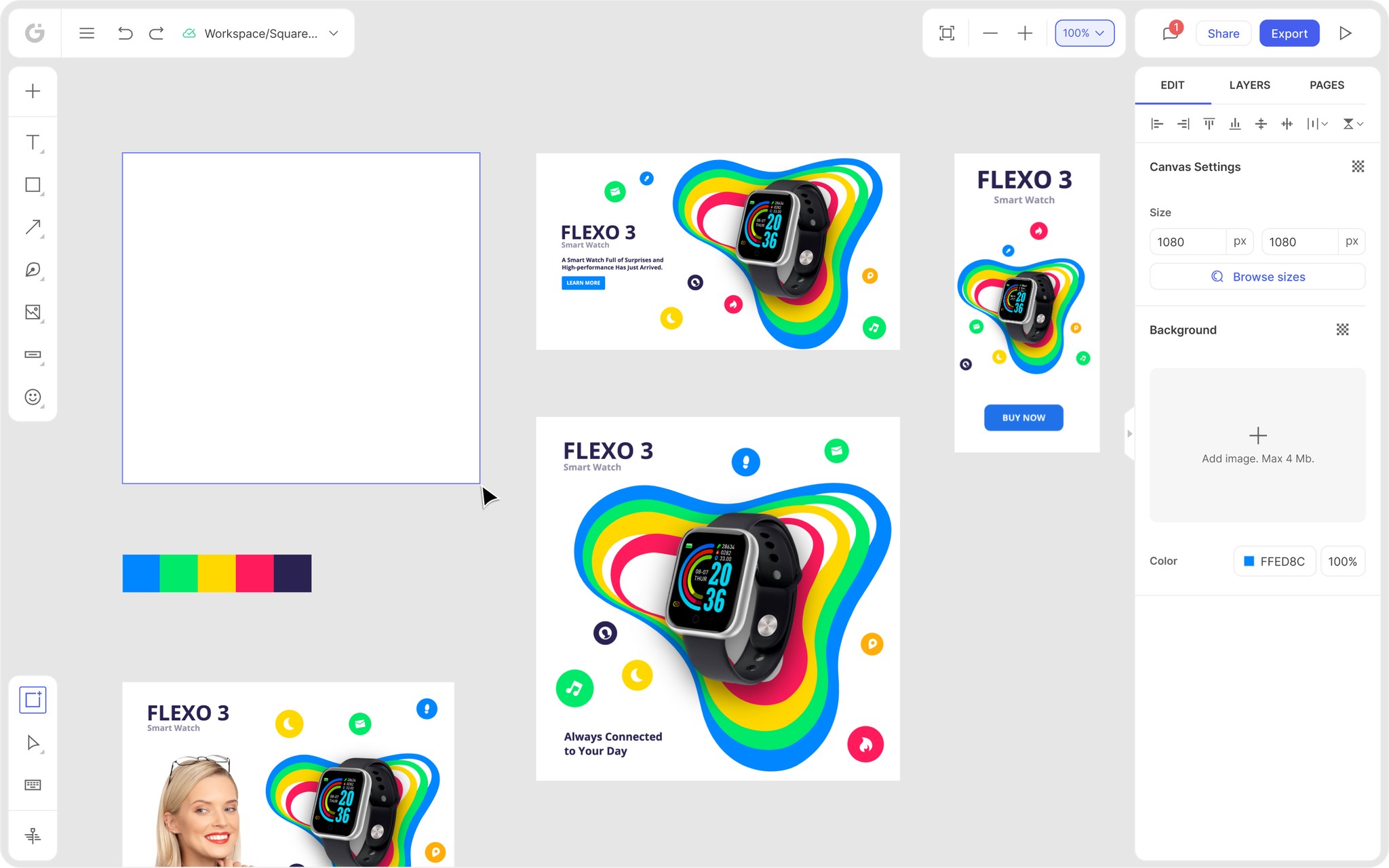We’re thrilled to announce that Glorify is officially partnering with Contra! This collaboration opens up exciting opportunities for designers, marketers, and creators in the Glorify community.
Posted Nov 9, 2022
•
5 min read

Design
How to Design with Monochromatic Colors
So what is monochromatic coloring?
The monochromatic coloring is one of the popular coloring techniques used by many designers today, especially in designing a brand logo. A monochromatic coloring is taking one color and gradually decreasing its shade (darker or lighter) to have a color range called monochromatic.
Designs in monochromatic coloring bring a professional and high value to the design. This is simply because the colors of the design are more consistent – they are the different tones of the same original color palette.

Picking a color palette for design projects can be a pain
If you’re starting from scratch, without a style guide or any client preferences to go on, where do you begin? For one, you might try a color scheme pulled from the pages of classic color theory. That’s right, color theory isn’t just for art students — it can also help designers use color in an effective, visually engaging way.
One of the easiest palettes to use (and hardest to mess up) is a monochromatic one. Although mono does mean “one,” this approach to color isn’t just using the same single shade in multiple places in your design. Instead, you can create a monochromatic color palette by choosing one base color (traditionally one of the 12 on the color wheel) plus any number of variations of that base. What type of variations? Let’s look at our options:
Shades: The base color darkened with black
Tones: The base color dulled (or desaturated) with gray
Tints: The base color lightened with white

Advantages of monochromatic coloring
The monochromatic coloring is the simplest color combination but brings a high performance. When choosing monochromatic coloring in your graphic design you only need to use a single color and try it with different color levels to get the best resonance.
The above is some information about monochrome and design in monochrome to help you understand more about one of the important coloring techniques in designing professional websites and logos.

6 Techniques for Designing with Monochromatic Color
1. Simplify a complex design
Sometimes it’s difficult to fit in a lot of information in a constricted space. Instead of making your design even complex and confusing with a lot of colors, a monotone color palette can help make a layout look cleaner and more organized.

2. Add a Color layer to Photography
Color can be applied to more than just text and graphics. Designs that feature photography can use a one-color scheme by applying a transparent color overlay or screen over the top. This works great with black-and-white photos—the shades of black, white, and gray show through the single-color overlay to create the impression of color variation and it also helps us create a pleasing and smooth transition.

3. Create Relationships and Progression in Your Design
One of the advantages of using a single color in your design is that it’s easy to make it look like various elements go together. This isn’t only a visual effect; it’s also functional and practical. Showing how the features of your design are related or how they interact with each other can help viewers instantly understand the message and purpose of your design. This can also create a visual connection between your viewers and your brand. For eg ‘Virgin Atlantic’ only uses the color red as the dominant part of the logo so whenever the consumers f this particular brand see any airline logo in red, they are most likely to related it to VA.

4. Divide your Design Into Sections
Color, particularly blocks of color, can be used to distinguish your design into sections — which is an important part of creating an organized, easy-to-make layout that has a good visual hierarchy. And is also pleasing to the eyes.

5. Keep It Simple!
There’s probably an endless number of tints, tones, and shades you could come up with for any given base color… but that doesn’t mean you need to use a lot of color variations in a monochromatic design. At some point, the subtle differences between colors won’t even be visually distinguishable. One way to keep your colors down to a manageable number is to only use as many as you need to separate your design elements — for instance, a three-color layout is pretty typical and might consist of background color, a text color, and an accent color for graphics or other elements.

In general, the principle of monochromatic coloring in graphic design is not too strict in comparison with other coloring techniques. What you need is to respect strictly some coloring rules for designing websites or logos.
Features
Alternatives
© 2019-2024 Glorify App - All rights reserved.















